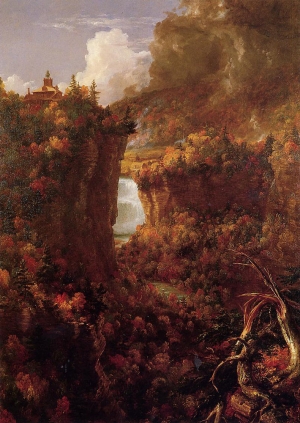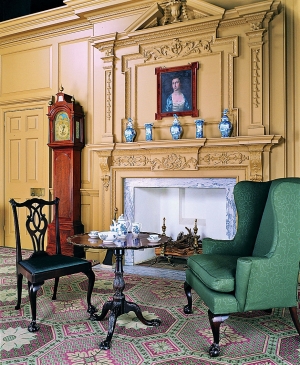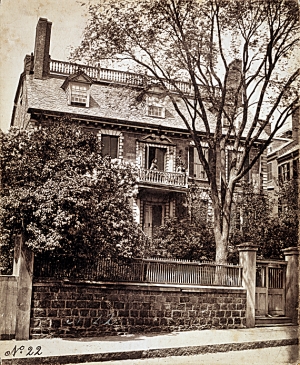|
Displaying items by tag: Preservation

The New York Public Library announced that it will put its original copy of the Bill of Rights on public display for the first time in decades. The document, which has been in the library’s collection since 1896, will go on view during the fall of 2014, commemorating the 225th anniversary of the document being drafted and proposed by Congress. The Bill of Rights will go on display alternately at the New York Public Library and in Pennsylvania at the National Constitution Center.
The document was previously unable to be displayed for extensive periods of time due to preservation issues. A special case, which was constructed by the National Institute for Standards and Technology, will ensure the document’s safety while it travels. The state-of-the-art preservation device, which cost an estimated $600,000 to create, was made possible by a generous gift from Ed Wachenheim III, a Trustee of the Library, and his wife, Sue.
The document is one of at least 14 original copies of the Bill of Rights, which was sent by the First Congress of the United States to the 13 colonies, 11 of which had already become states, and to the Federal government in 1789. Four of the states, including New York and Pennsylvania, no longer have their copies of the Bill.
Beginning in 2014, the document will be displayed alternately by the Library and the Constitution Center equally for the first six year. After that, the Library will display the document 60% of the time.

A significant painting by Thomas Cole (1801-1848), the English-born American artist who founded the Hudson River School, will be sold to benefit the Seward House Museum in Auburn, New York. Portage Falls on the Genesee (1839) was given to the American politician William H. Seward (1801-1972) while he was the governor of New York prior to the Civil War. Seward went on to serve as Secretary of State under Abraham Lincoln and Andrew Johnson.
The painting, which depicts what is now Letchworth State Park in western New York, has been a part of the Seward Museum’s collection for decades. Seward’s home and contents were donated to the Fred L. Emerson Foundation in the 1950s by Seward’s grandson, William Henry Seward III. The Seward House opened to the public in 1955 and became a registered National Historic Landmark in 1964. The museum became a fully independent, not-for-profit museum in 2009 and the Cole painting was retained by the foundation.
The recent discovery of the painting’s value and the subsequent need for greater security prompted officials to put the work up for sale. Funds from the sale will be split between the Emerson Foundation and the Seward House Museum. The museum plans to use its portion of the proceeds to further its preservation mission. Portage Falls on the Genesee is being kept in a secure storage location until the sale is official.

A Grand Tour: Trade Winds of Influence
16th Annual Charleston Art & Antiques Forum
March 13–17, 2013
Old Courtroom, 23 Chalmers Street, Charleston, S.C.
For information visit www.CharlestonAntiquesForum.org or call 800.926.2520
The forum will bring together an impressive group of speakers from the US and Europe who will demonstrate the influence of the Grand Tours of the seventeenth through nineteenth centuries on the architecture, furniture, silver, art, and gardens of Americans and Europeans alike. Dame Rosalind Savill, Director Emeritus of the Wallace Collection, London, England, will deliver the keynote address, focusing on her experience with French decorative arts. The mission of the Charleston Art & Antiques Forum is to present the best fine and decorative arts scholarship, and to benefit arts education and preservation. Sponsors of the 2013 Forum are Charlton Hall Auctions, PDI, and the Florence Museum.
10th Annual Charleston Antiques Show
March 22–24, 2013; preview March 21
Memminger Auditorium, 56 Beaufain Street, Charleston, S.C.
66th Annual Spring Festival of Houses and Gardens
March 21–April 20, 2013
For information visit www.historiccharleston.org or call 843.723.1623
Inspired by the rich historical, architectural, and cultural heritage of Charleston, the 10th annual Charleston Antiques Show is a premier destination for collectors and enthusiasts who enjoy seeing and learning about incorporating antiques into modern-day décor. Attendees will find English, European, and American period furnishings, decorative arts, and fine art, architectural elements, garden furniture, vintage jewelry, and silver. In addition to attending the show, visitors can sign up for special events such as a luncheon lecture with the award-winning classical architect Gil Schafer, behind-the-scenes tours with experts, and study tours. While in Charleston, enjoy walking tours through the city’s historic district showcasing Charleston’s distinctive architecture, history, and gardens during the 66th Annual Festival of Houses and Gardens and experience the intimate charm and elegance found within private gardens and historic homes.
Newport, Rhode Island, retains more of the imprint of each successive era of American history, more thoroughly preserved, than anywhere else in the United States. The people who live here, and even those who just come to visit, seem to develop fervor for the place. Can one small town on a small island in the smallest state be that significant?
Upon her death on January 7, 2013 at the age of 91, Ada Louise Huxtable (1921-2013), a pioneering architecture critic, writer and historian, left her entire estate and her archives to the Getty Research Institute in Los Angeles. The bequest also included an apartment in New York City, a house in Marblehead, MA, and the archives of Huxtable’s husband, industrial designer, Garth Huxtable (1911-1989). Huxtable served as the architecture critic for the New York Times from 1963 to 1982 (she was the first full-time architecture critic at an American newspaper) and as a writer for the Wall Street Journal.
The Huxtable Archives, which include notes, correspondence, research files, manuscripts, drawings, and photography, will become part of the Getty’s Special Collections holdings. Huxtable, a proponent of historic preservation, will have her own groundbreaking work conserved for the benefit of the public and the field of architecture thanks to her partnership with the Getty.

A house built in 1952 by Frank Lloyd Wright for his son, David, has spent months on the brink of demolition. Fortunately, an anonymous buyer has purchased the Phoenix, Arizona home, ensuring its preservation.
The buyer paid $2.387 million for the house, which overlooks the picturesque Camelback Mountains. The former owners, Steve Sells and John Hoffman of the Arizona-based development company, 8081 Meridian, continued to raise the price of the house after purchasing the property for $1.8 million this past June.
The Frank Lloyd Wright Building Conservancy, an organization devoted to preserving the seminal architect’s legacy, facilitated the recent sale. After hearing that the former owners planned to level the house and split the lot to build new homes, the conservancy petitioned the city with the help of other organizations, asking that the house be granted landmark status. While three local government bodies approved the proposal, the City Council, which would be the deciding vote, repeatedly postponed their decision.
One of Wright’s most significant later works, the house in Phoenix features a coiled design similar to the one Wright employed for the Guggenheim Museum in New York. For years ago, Wright’s granddaughters decided to sell the house to a buyer they thought would preserve it. However, the house was sold again in June to 8081 Meridian putting it in danger of demolition.
While the house is in need of approximately $300,000 worth of restoration, the conservancy is helping to establish a nonprofit organization that will maintain and operate the house as well as oversee the renovation. The new owner plans to acquire landmark status for the house so that it can be made available for educational purposes on a limited basis.
Four works by contemporary heavyweights Fred Tomaselli, Takashi Murakami, Mickalene Thomas, and Gilbert & George will be offered by Christie’s to benefit the artistic activities of the Brooklyn Museum. Profits from the sale, which will be held during the Post-War and Contemporary auction on November 15, will go towards the preservation and presentation of the museum’s collection, exhibitions, and a variety of public programs. The four works were made especially for the auction.
The sale marks the beginning of BKLYN: A Celebration of the Brooklyn Museum, a multi-year collaboration between Christie’s and the museum that will include additional sales benefitting the institution. Housed in a 560,000-square-foot Beaux-Arts building, the Brooklyn Museum is one of the oldest and largest institutions in the country. Its permanent collection features everything from ancient Egyptian pieces to contemporary art.

Well before the term "historic preservation" came into vogue, New Englanders were saving old houses. The first documented preservation effort in America was launched at Deerfield, Massachusetts, in 1847, where residents joined forces to save the Old Indian House, survivor of an infamous 1704 attack on the village. Although the house was torn down, consciousness had been raised and a number of subsequent campaigns, like those for Mount Vernon and Independence Hall, were successful. In New England, preservation victories were tempered by major losses; most notably the 1863 demolition of Boston's venerable 1737 John Hancock House (Fig. 1). Throughout the nineteenth century, individuals like Henry David Thoreau championed saving old houses for their aesthetic value. Antiquarians like Deerfield's George Sheldon and Cummings Davis in Concord, regularly accessed neighbors" attics and cellars to "rescue" early artifacts and documents. Often viewed as eccentrics, these avocational preservationists were building a compelling case for the need to protect the material culture of seventeenth- and eighteenth-century New England.
|
|
|
|
|